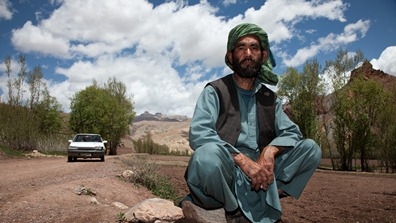SUMARA VALLEY, Afghanistan – Sometimes, a good stretch of road can mean the difference between life and death. Sharbat Ali believes this because he lost his wife at age 22 as she travelled, semi-conscious, on a donkey’s back down a mountain path for medical help.
“She died on that trail,” Ali, now 63, recalls. “I never knew what was wrong with her. We just couldn’t get to hospital.”
Today, Ali thinks things might have been different. About four years ago, construction was completed on a 15-kilometer stretch of road that winds through the Sumara valley, connecting Ali’s isolated village and nine others with a main thoroughfare to Bamiyan city in Afghanistan’s central region.
The road was built under the Afghan government’s National Emergency Rural Access Program. The purpose of the program is to provide remote communities with year-round access to basic services like hospitals, schools, and shops in larger towns, while providing jobs in road construction. This program is supported by World Bank’s Afghanistan Rural Access Program with total funding provided by the World Bank and the Afghanistan Reconstruction Trust Fund (ARTF) of $564 million.
The target is to rehabilitate nearly 5,000 kilometers of rural road, construct more than 5,600 meters of bridge, and contract 5,400 kilometers of rural road for routine maintenance. So far, more than 2,000 kilometers of road have been rehabilitated, some 1,900 meters of bridge constructed, and a contract signed for maintaining 1,360 kilometers of roads, generating over 2 million labor days. The projects cover all 34 provinces, which include thousands of villages.

